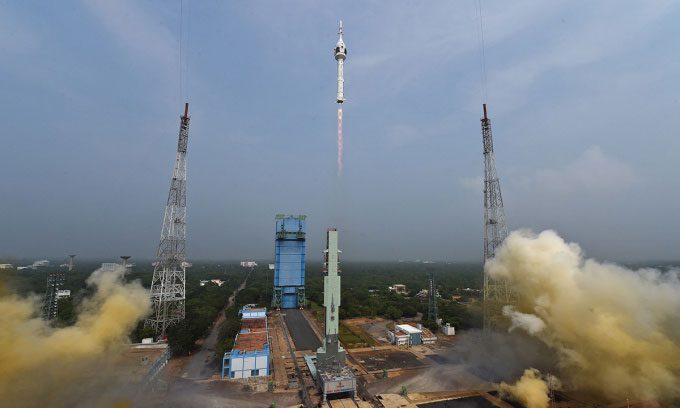On October 21, India successfully conducted its first unmanned test flight with the Gaganyaan spacecraft, designed to carry three astronauts.
According to the plan, the Gaganyaan mission aims to send three astronauts into Earth’s orbit by 2025, demonstrating the technical capabilities of the Indian Space Research Organisation (ISRO). The launch on October 21 was intended to test the emergency escape system of the crew module. This module detached from the launch vehicle and landed safely in the sea approximately 10 minutes after liftoff.

Test launch of the Gaganyaan spacecraft at the Satish Dhawan Space Centre, Sriharikota Island, on October 21. (Photo: AFP/ISRO).
“I am pleased to announce that the mission has been successfully deployed,” stated S. Somanath, head of ISRO. The launch was initially scheduled for 9:30 AM (Hanoi time) at the Satish Dhawan Space Centre on Sriharikota Island, but was delayed by two hours due to bad weather and engine issues.
ISRO will conduct a series of 20 major tests, including sending a robot into space, before the actual crewed mission takes place. Gaganyaan is India’s first mission of this kind, with an estimated cost of about $1.08 billion, according to ISRO.
India plans to send astronauts beyond Earth’s atmosphere for three days, then safely return them and land gently in its territorial waters. Previously, Prime Minister Narendra Modi also announced plans to send humans to the Moon by 2040.
2023 has been a year of significant achievements for India’s space program. In August, India became the fourth country to land on the Moon, following Russia, the United States, and China. In September, it launched a spacecraft to observe the outer layers of the Sun from orbit.
India’s space program has significantly developed since it first launched a spacecraft into lunar orbit in 2008. The country is gradually catching up with the achievements of space superpowers at lower costs. India is also planning to collaborate with Japan to launch another lunar probe in 2025 and an orbiter to Venus in the next two years.
Experts believe that India maintains low costs by replicating and adapting existing technologies while employing many highly skilled engineers at lower wages compared to foreign engineers.


















































